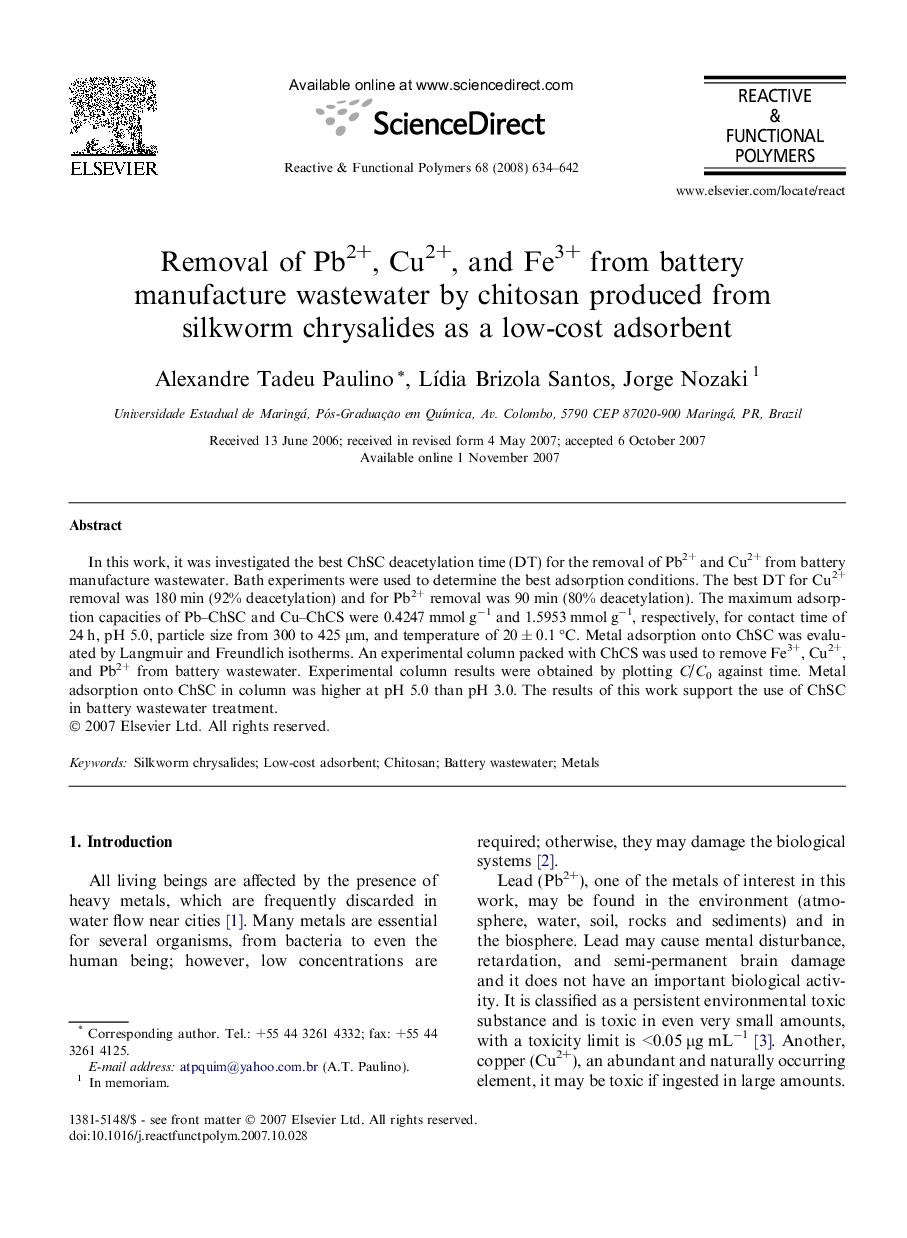| Article ID | Journal | Published Year | Pages | File Type |
|---|---|---|---|---|
| 5211039 | Reactive and Functional Polymers | 2008 | 9 Pages |
Abstract
In this work, it was investigated the best ChSC deacetylation time (DT) for the removal of Pb2+ and Cu2+ from battery manufacture wastewater. Bath experiments were used to determine the best adsorption conditions. The best DT for Cu2+ removal was 180 min (92% deacetylation) and for Pb2+ removal was 90 min (80% deacetylation). The maximum adsorption capacities of Pb-ChSC and Cu-ChCS were 0.4247 mmol gâ1 and 1.5953 mmol gâ1, respectively, for contact time of 24 h, pH 5.0, particle size from 300 to 425 μm, and temperature of 20 ± 0.1 °C. Metal adsorption onto ChSC was evaluated by Langmuir and Freundlich isotherms. An experimental column packed with ChCS was used to remove Fe3+, Cu2+, and Pb2+ from battery wastewater. Experimental column results were obtained by plotting C/C0 against time. Metal adsorption onto ChSC in column was higher at pH 5.0 than pH 3.0. The results of this work support the use of ChSC in battery wastewater treatment.
Related Topics
Physical Sciences and Engineering
Chemistry
Organic Chemistry
Authors
Alexandre Tadeu Paulino, LÃdia Brizola Santos, Jorge Nozaki,
